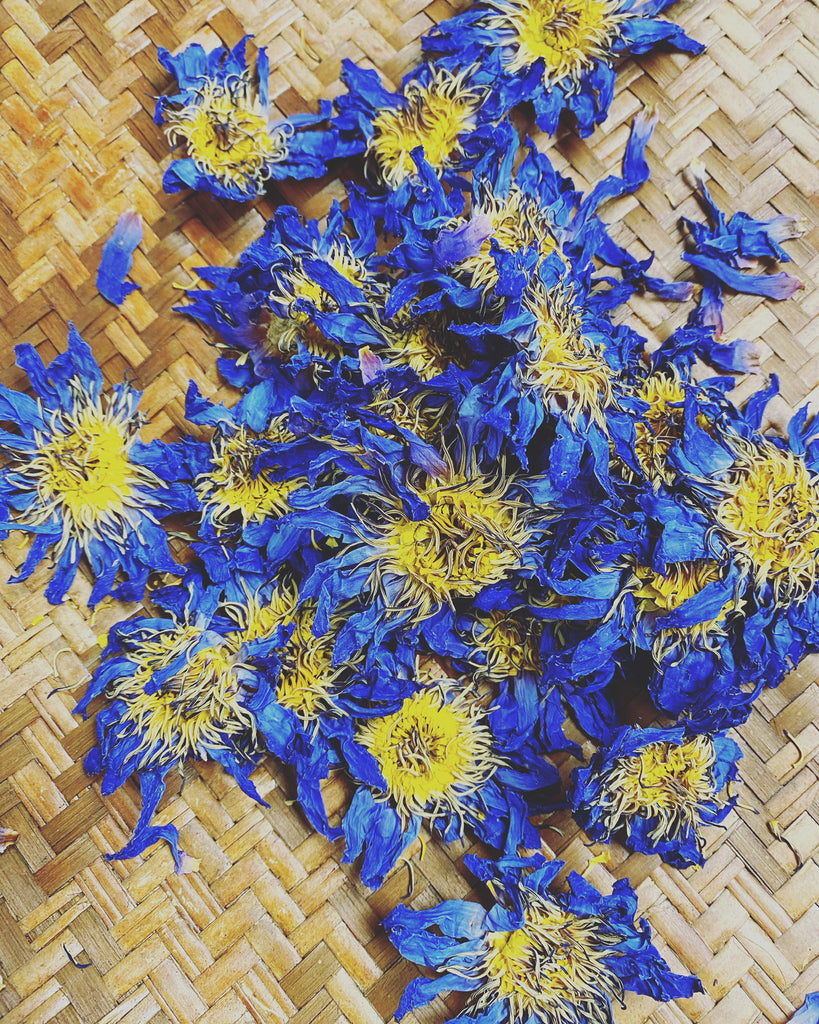Nature has gifted us with an array of captivating flowers, each holding its own significance and allure. Among these botanical treasures lies the mesmerizing Blue Lotus flower. With its enchanting hue and rich cultural history, the Blue Lotus has captivated hearts and minds for centuries. In this blog post, we delve into the symbolism, history, and benefits surrounding this mystical bloom.
Symbolism and Cultural Significance:
The Blue Lotus (Nymphaea caerulea) holds profound symbolic value in various ancient cultures. It has been prominently featured in religious and spiritual practices, particularly in ancient Egypt and India. In Egyptian mythology, the Blue Lotus was associated with rebirth, creation, and the sun god Ra. It was often depicted in hieroglyphs and found in tombs, symbolizing the journey of the soul into the afterlife.
In Indian culture, the Blue Lotus, known as the "Sacred Blue Lily of the Nile," is revered as a symbol of spiritual enlightenment, purity, and divine beauty. It is often associated with deities like Lord Vishnu and Goddess Saraswati, representing their transcendent qualities and wisdom.
Historical Significance:
The historical significance of the Blue Lotus extends beyond its symbolism. Ancient civilizations recognized its medicinal and psychoactive properties. The Egyptians and Mayans used the flower in ceremonial rituals, believing it could induce a sense of tranquility and euphoria.
In ancient Egypt, the Blue Lotus was steeped in wine or consumed as a tea. Its effects were said to promote relaxation, alleviate pain, and enhance lucid dreaming. It was also used as an aphrodisiac and a symbol of fertility. The flower's therapeutic qualities have earned it a special place in traditional medicine practices.
Modern Applications and Benefits:
Even in the present day, the Blue Lotus continues to intrigue and offer potential benefits. Its extracts are used in herbal remedies and holistic practices. Here are a few notable applications:
- Relaxation and Stress Relief: The Blue Lotus is renowned for its calming effects. Its extracts are believed to promote relaxation, relieve anxiety, and enhance mood, making it a popular choice for aromatherapy and natural stress management.
- Sleep Aid: Traditionally, the Blue Lotus has been used to improve sleep quality and induce vivid dreams. Its relaxing properties may help combat insomnia and promote restful sleep.
- Nourishing the Skin: Blue Lotus extract is often found in skincare products due to its hydrating and antioxidant properties. It can help moisturize the skin, protect against environmental stressors, and promote a youthful complexion.
- Meditation and Spiritual Practices: The Blue Lotus continues to be revered for its potential to enhance meditation and spiritual experiences. It is sometimes used as an incense or infused into teas, allowing individuals to achieve a state of tranquility and inner reflection.
Conclusion:
The Blue Lotus flower's allure and symbolism have transcended time, captivating the imagination of ancient civilizations and modern-day enthusiasts alike. From its profound cultural significance to its potential therapeutic benefits, this mystical bloom continues to intrigue and inspire. Whether appreciated for its vibrant beauty, incorporated into wellness routines, or embraced for its spiritual resonance, the Blue Lotus stands as a testament to the enduring power and wonder of nature's creations.

